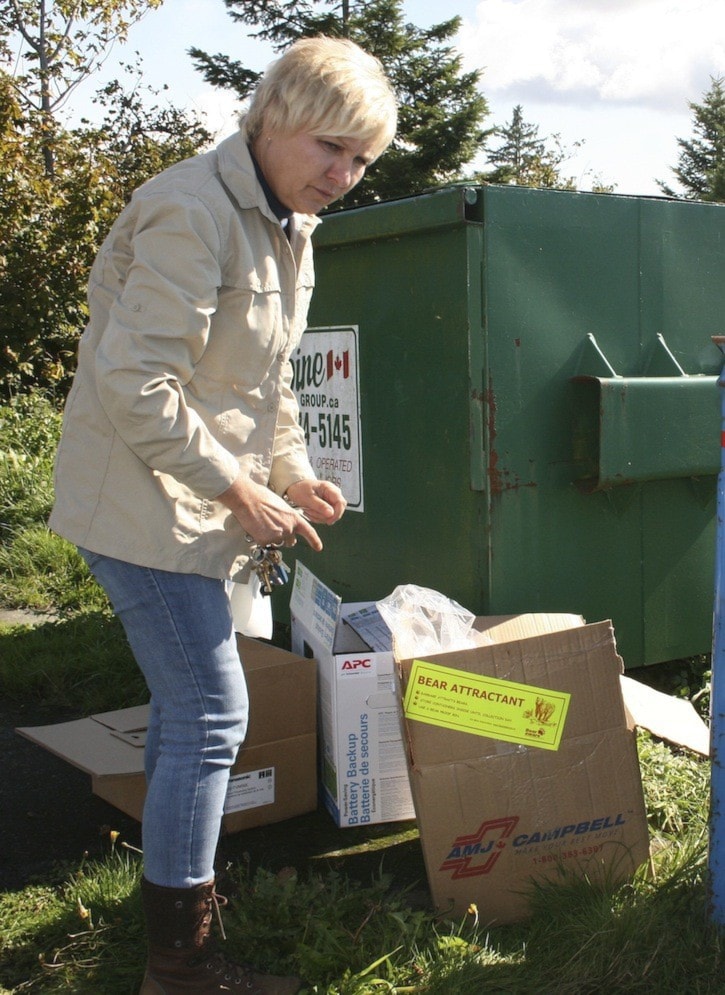There are more than 250 sightings of bears reported in the Sooke area in many months of the year. In just one day Debbie Read has received 13 emails with reported bear sightings.
“The reports are from all over Sooke,” said Read of the emails.
Read works with Wild Safe BC and tries to educate people on what they can do to decrease bear and human conflicts. The British Columbia Conservation Foundation may be best known for their “Bear Aware” program. This year they are merging the program into a new program that will include all wild animals living near urban areas in B.C.
The program, called WildSafe BC, aims to reduce human and wildlife conflict through education, innovation and cooperation.
Whatever they call the program, the problem is the same.
“We’re getting calls because people are not managing their attractants,” she said. “It’s a people problem, not a bear problem.”
Attractants such as garbage, fruit trees, windfalls and bird feeders are all picked up by a bear’s great sense of smell. Read said bears can smell garbage from as far away as two miles. They have found easy pickings in apartment buildings and places where easily opened blue bins are found. Read has been going around to areas in Sooke where she sees bear attractants and putting stickers on noting they are bear attractant.
She has responded to a bear sighting and when she went to the home, there was garbage everywhere.
“And they are calling saying ‘there’s a bear in my garbage’,” said Read.
Right now bears are feeding on whatever they can find. They are getting ready for hibernation and need 20,000 calories a day to fatten themselves up and get them over the winter season.
Garbage is easier than picking berries and bears remember,” she stated. “We have to stop attracting them and it’s education, education, education.”
Bears are omnivorous animals with vegetation making up about 80 per cent of their diet and the remainder coming from small rodents, fish, insects, carrion and sometimes young deer, elk or moose.
Bears are motivated by food and once they have found a food source they are protective of it and that is where the human/bear conflict can arise.
She said fruit trees are a big problem right now and bears will strip a tree of all edible fruit. Read advises people to pick their fruit or contact Sooke Food CHI (info@sookefoodchi.ca) for information on their Fruit Tree Project.
The sad thing about bears and humans is that the human usually wins. Bears are not easy to relocate as they will often not survive and it is not a good option. So, many times they are shot as nuisance bears.
“It’s not a positive situation,” said Read. “A fed bear is a dead bear.”
Wild Safe BC has a website where one can look to see where bears have been sighted: http://www.wildsafebc.com/WARP.
A list of ways to manage your attractants is located on page 5.
